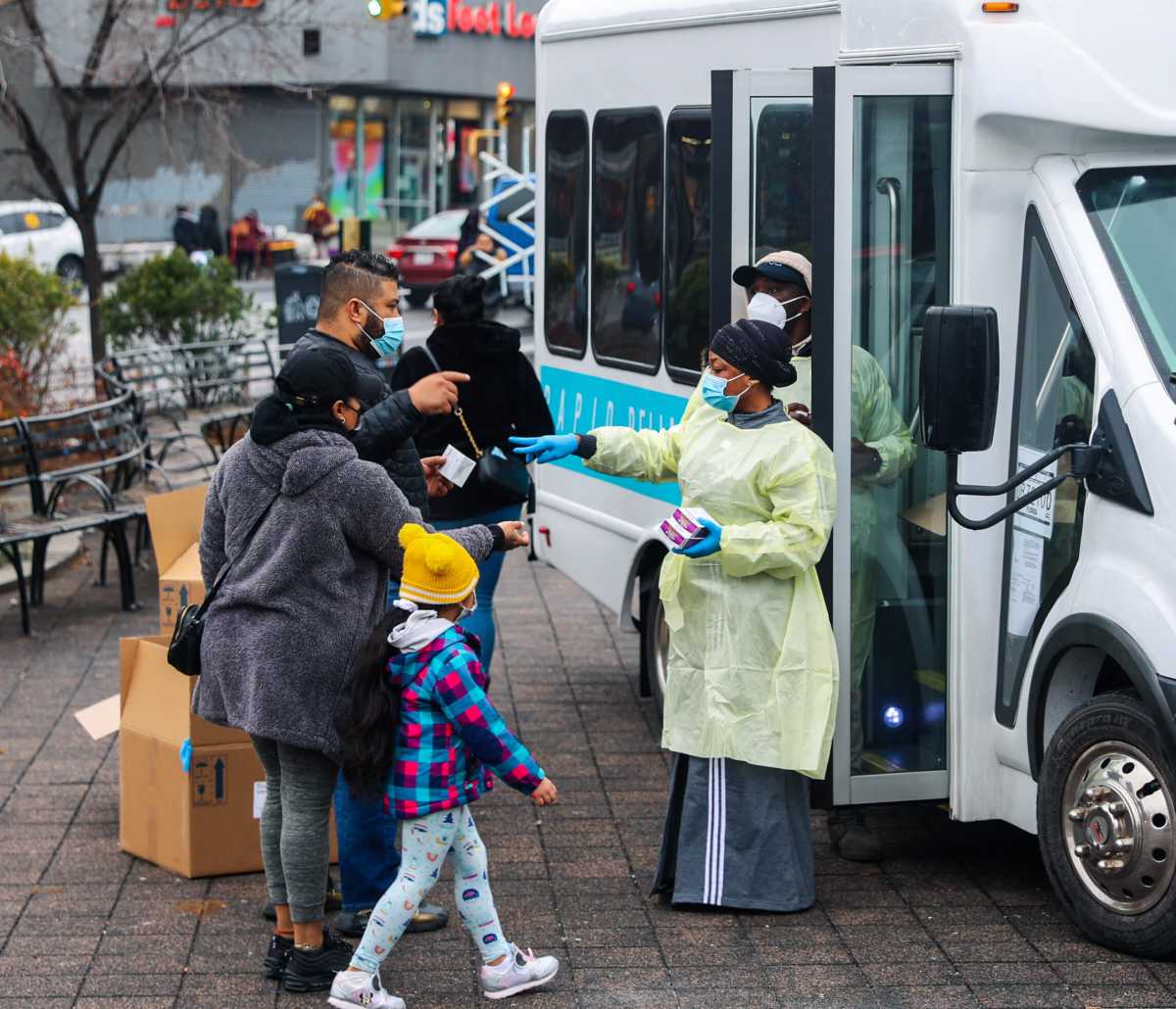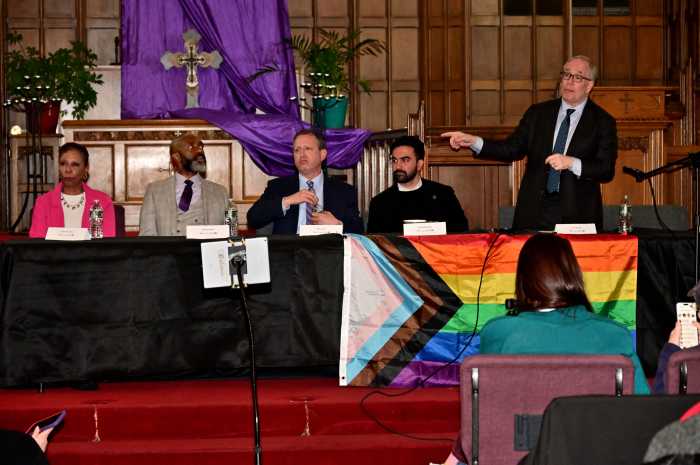March 11 marked five years since the World Health Organization declared COVID-19 a global pandemic, and while cases and hospitalizations in the Bronx have since dwindled to a trickle, Bronxites are still dealing with financial strain and uncertainty.
While the most visible signs of the pandemic have waned, some key economic indicators—like the unemployment rate—have not returned to pre-pandemic levels, while the number of households receiving food assistance continues to increase.
Eileen Torres, Chief Executive Officer of BronxWorks, one of the largest and longest-running nonprofit service providers in the borough, told the Bronx Times that the pandemic interrupted a period of sustained economic advancement for the borough.
“ It looked like things were improving for everyone,” Torres said. “Then once Covid hit; I can’t underscore the chaos and the stress and the anxiety during that time.”
Nonprofits that provided essential services like BronxWorks, and nutrition services like City Harvest, said that the rising need for food assistance in the borough is indicative of larger economic issues that Bronx families continue to face after the global pandemic.
“ Unfortunately for many of our neighbors it’s always the question of ‘what do I do?’” Torres said. “‘Do I pay rent? Do I put food on the table? Do I pay my electricity? Do I buy my child new clothing for school?’ There are all these demands placed on that small paycheck that people are getting.”
Five years after the COVID-19 pandemic began to devastate the borough, Bronx residents face higher unemployment and greater food insecurity than before the crisis, according to federal data.
During the height of the pandemic, the Bronx was one of the hardest hit counties in the nation for COVID-19 hospitalizations and deaths, according to Johns Hopkins University. Factors like asthma, heart disease and obesity combined with social determinants of health like income and healthcare access merged to create conditions that would devastate entire neighborhoods with the coronavirus.
From notorious COVID hot spots like River Park Towers in Morris Heights to the halls of Jacobi Medical Center, Bronx residents were surrounded by COVID, but many did not have the option to stay home. Torres told the Bronx Times that service workers for BronxWorks had to make do without personal protective equipment, figuring out how to provide the care that Bronxites needed while trying to protect themselves.
“ We were desperate to be able to provide a safe environment for everyone,” Torres said. “We put up shower curtains in vehicles to try to sort of be a barrier between us and the folks that we had to transport from one place to another.”
A review of three years of pandemic data published by Oxford University Press showed that the Bronx led the city in death rates related to COVID-19 at 470 deaths per 100,000 individuals.
But even after free COVID testing vans vanished from street corners, students returned to in-person classes, and mask mandates were lifted, the borough is still struggling to regain its pre-pandemic “norm.”
The Bronx lags behind the other boroughs in employment with an unemployment rate of 6.8% in late 2024, up from a low of 4.7% – 4.9% in 2019 just before the pandemic. Meanwhile, Brooklyn, the borough with the second highest rate, showed 5.5% unemployment in late 2024 compared to a low of 3.4% – 3.7% prior to the pandemic.
Still, BronxWorks Director of Advancement and Communications Gianna Dell’Olio said the organization continues to offer—and expand—its workforce development services, viewing the growing demand as a sign of progress.
“ The workforce was unstable for a while because of COVID and all the things that happened during, before and after,” Dell’Olio said. “But we are seeing an uptick in individuals who are looking to put down those strong roots and improve their work, improve their careers and really take that investment in careers.”
But with rising costs of living, making ends meet is increasingly difficult, even for those with work.
One area where the financial gap is easier for some Bronx households to bridge is food. While many costs of living for Bronxites are fixed like rent, insurance, credit card, and car payments, nonprofits like BronxWorks or City Harvest, a food rescue and distribution nonprofit, can alleviate some of the burden for families in the borough.
Jilly Stephens, Chief Executive Officer of City Harvest, told the Bronx Times that since the COVID-19 pandemic, food insecurity in New York City has gotten worse.
“There is this sense that things are ‘back to normal’ after the pandemic, but we know that is not true for so many of our neighbors,” Stephens said in a statement. “Rising costs have created a real crisis of affordability in our city. The majority of New Yorkers visiting food pantries have jobs—sometimes two or three—but their wages simply cannot keep pace with the cost of living here.”
The Bronx has almost double the rate of households receiving Supplemental Nutrition Assistance Program (SNAP) benefits from the federal government than the borough with the next highest rate of food insecurity. In 2023, the latest available data, 39.4% of households in the Bronx received SNAP benefits compared to 23% of households in Brooklyn and 14.9% of households in Manhattan. In 2021, the first year with data available after the pandemic, 36.7% of households in the Bronx were enrolled in the program.
During the pandemic, BronxWorks increased the number of food pantries it operated from four to 16 to respond to the skyrocketing need. Since then, the nonprofit organization has maintained 14 of its food pantries. Torres told the Bronx Times that there is enough need to keep most of the additional locations running.
Both organizations say they have no plans to slow down operations, with Stephens noting that the looming threat of federal funding cuts under the Trump administration has social service providers advocating for more resources at the state level. But with fixed costs like housing, utilities and childcare getting more expensive and funding for federal assistance programs uncertain, the Bronx’s economic advancement mat be stalling out.



















